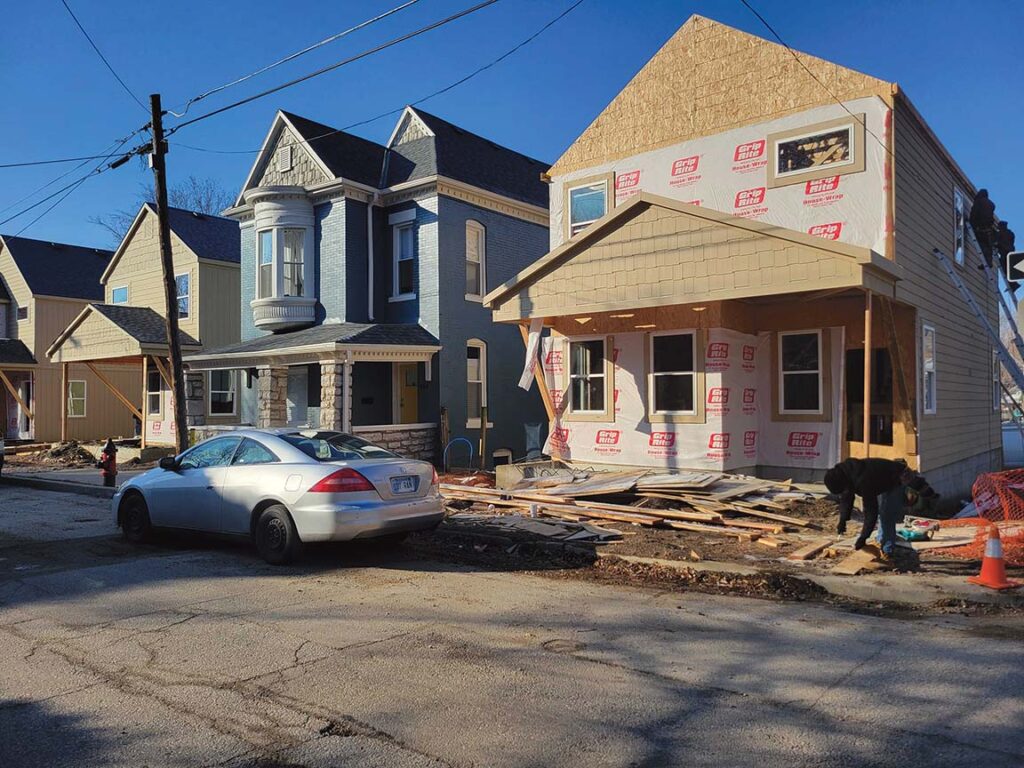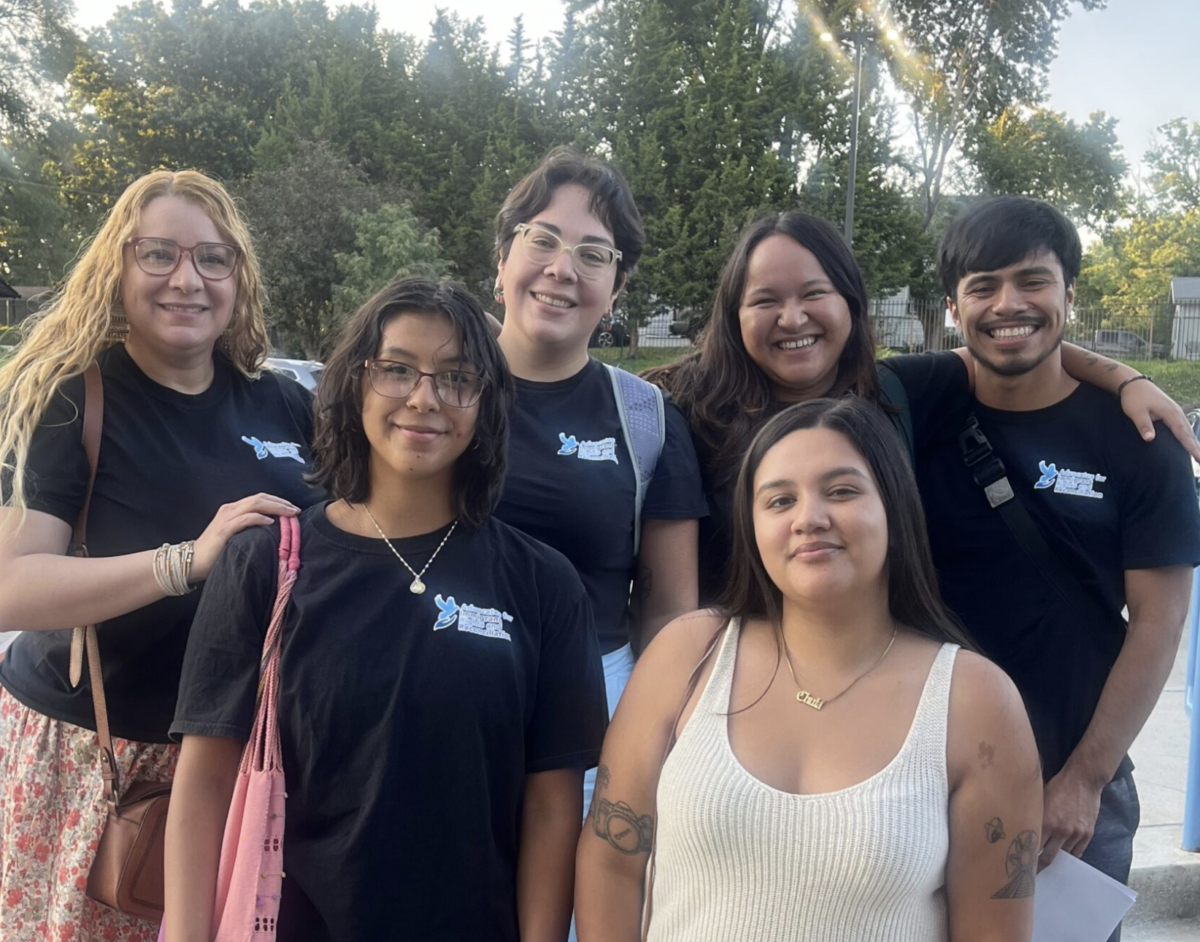
Abby Hoover
Managing Editor
In Pendleton Heights, market rate single family homes are going up in a historic district.
Caleb and Adam Whitmer have been investing in Pendleton Heights since around 2006, renovating single family homes and duplexes. Now, they’re working on their first infill housing project through PH Homes LLC, building three new homes on Olive Street and one on Park Avenue.
“There’s an existing property there at 408 Olive, and it sat on an oversized lot, kind of L-shaped, huge yard, but also kind of a little bit funky if it was just going to be tied to that one house,” Caleb Whitmer said. “And there were existing properties there at one time that had been torn down.”
For the Whitmers, it seemed like the best use of space, especially knowing that there’s not a lot of inventory for people who want to live in the area.
“It seems to be that there’s a big demand for that, not only to live in the urban core, but also have enough space to live comfortably, while also not pushing up to those 4,000 and 5,000 square foot homes,” Caleb Whitmer said.
They replatted the area – initially seeking five new lots and ending up with four – which was challenging and took a lot of back-and-forth work with the City. Knowing all the challenges they had to face with the City, they’re not sure it’ll be worth it.
“We still have plenty of things to complete and, obviously, to get the property sold and see where everything shakes out before we make that assessment,” Caleb Whitmer said. “Again, I think the biggest challenge was re-dividing that land, and so maybe if there was an opportunity to just build infill, true infill housing on an existing single family lot, and we did not have to go through the design and plan phase, then that would be more enticing than doing what we did. It was just, it was so much time invested.”
They also couldn’t sell the house at 408 Olive St., a home they renovated, until the land was divided.
The architect for the project, Travis Willson with Veritas Architecture + Design, let the brothers know about an ordinance being considered by City Council that may make it easier to build infill housing in the future.
Three of the houses are framed, and two of them are in the rough-in stages with mechanical and plumbing. They plan to work quickly, hoping to get at least one or two ready for the spring market, and aiming for full completion by the middle of the summer.
Working in a historic district has been challenging, but Willson worked hand-in-hand with the Historic Preservation Department.
“The new construction has been, in a lot of ways, really fun because, honestly, remodeling those 100-year-old homes is pretty challenging,” Caleb Whitmer said. “When you’re starting new, there’s their own set of challenges, but it’s just a lot more straightforward.”
Eric and Deanna Bellamaganya, who own Core Realty and Core Coffee, both run out of an old brick building on Olive Street, are looking forward to the new development.
“We know it’s been an effort for many years to get infill housing in Pendleton Heights,” Eric said. “Finding a developer who has shown interest has been difficult, and finding land has been difficult.”
The Bellamaganyas have worked with the Whitmer brothers on real estate before and are confident in their work, and their investment in the neighborhood. The Whitmers own multiple properties on the block, including Core’s building, and multi-family housing.
“Those homes are being designed to be the best use of land on that end of the block,” said Eric, who also lives on Olive Street. “In my opinion, I think that Kansas City, historically, has been pretty bad at using their urban land wisely. So to create a more dense urban infill, I think it’s a smart use of the land, and that’s kind of what the intent is.”
Small developers are encountering long, difficult processes with the City, making infill housing cost prohibitive, Eric said.
“Having vacant land and having vacant houses sitting around in an urban core is a huge waste, anyhow,” Eric said. “There’s a demand for housing in Kansas City. Kansas City is growing, and I think there’s a growing interest in living closer to the city center where you can be close to your amenities.
Unfortunately, the housing stock is sparse – or rather, the livable housing stock is sparse – at this point.”
Infill housing creates diverse and vibrant neighborhoods because it provides opportunities for a variety of buyers, the Bellamganyas have noticed.
Eric explained that the setbacks are similar, the porches will be a similar scale and size, and the height and square footage will be comparable, around 1,600 square feet.
“They won’t be modern like what was on the Westside because that’s not a historic district – not that that’s bad, there’s a real need for it – but I really like the idea that they’re going to look like the other houses on the street,” Deanna said. “I think that they should integrate really well.”
Recently, the City passed Ordinance 220997, creating Residential Infill Development standards and amending the Minor Subdivisions standards. The Kansas City Neighborhood Advisory Council (KCNAC) raised concerns about specific language, retaining public engagement requirements, improving coordination of the Residential Infill Development standards with existing zoning code language, design and construction industry standards, and improving the accessibility of the proposed language and code structure.
The ordinance, which passed earlier this month, could pave the way for easier redevelopment of vacant parcels in neighborhoods throughout Northeast.


















